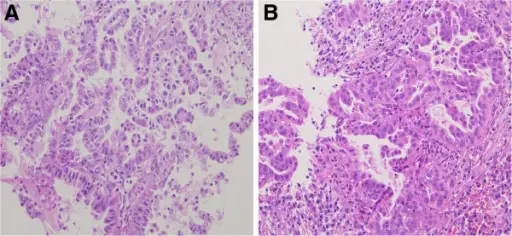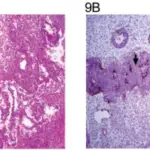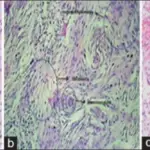A pineal parenchymal tumor is a primary central nervous system (CNS) tumor. These tumors begin in the brain (in the pineal gland) but can spread to the spinal cord.
What is the Pathology of Pineal Parenchymal Tumors?
Etiology: The cause of pineal parenchymal tumors is unknown.
Genes involved: SYP (Synaptophysin).
Pathogenesis: Abnormal proliferation of pineal cells.
Histology: The histology associated with pineal parenchymal tumors shows 2 distinct morphologic subtypes: large-cell and small-cell. H&E stained sections of the large-cell subtype show larger nuclei with greater nuclear pleomorphism, more abundant cytoplasm, and more abundant neurophil-like stroma in the background. H&E stained sections of the small-cell subtype show smaller, more uniform nuclei with inconspicuous nucleoli and scant cytoplasm with very little stroma in the background.
How does Pineal Parenchymal Tumors Present?
Patients with pineal parenchymal tumors are typically males. The common age group is 20-64 years. The symptoms, features, and clinical findings associated with pineal parenchymal tumors include headaches, nausea, and vomiting.
How is Pineal Parenchymal Tumor Diagnosed?
Pineal parenchymal tumor is diagnosed by biopsy.
How is Pineal Parenchymal Tumor Treated?
Pineocytomas are treated with surgical resection. If complete or subtotal resection is accomplished, the outcome is favorable, even without adjuvant treatment.
What is the Prognosis of Pineal Parenchymal Tumors?
The prognosis of pineal parenchymal tumor is poor, but can get better with treatment.



